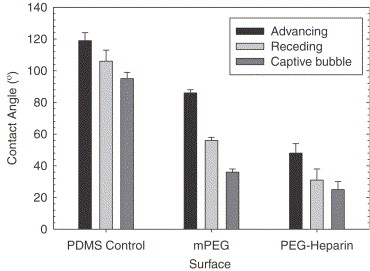Immobilization of heparin on a silicone surface through a heterobifunctional PEG spacer
Biomaterials,
2005,
26,
7418-7424.
文章链接:http://dx.doi.org/10.1016/j.biomaterials.2005.05.053
Immobilization of heparin on a silicone surface through a heterobifunctional PEG spacer
发布日期:2005-12-25
A novel method of immobilizing heparin on a silicone surface through a heterobifunctional PEG spacer was used yield well defined surfaces with highly active surface immobilized heparin and low non-specific protein adsorption. The heparin surface density achieved using this technique was 0.68 mu g/cm(2). Sessile drop water contact angles showed increased hydrophilicity of the silicone surface after PEG modification and a further decrease in the contact angles following the grafting of heparin. High specificity for ATIII with little fibrinogen adsorption was noted in plasma adsorption studies. This ATIII adsorption was mediated by the heparin layer, since surfaces modified with PEG only did not adsorb significant quantities of AT. The thrombin resistance of the heparin modified surfaces was demonstrably greater as measured by a chromogenic thrombin generation assay. The results suggest that the heterbifunctional PEG linker results in a high density of active heparin on the surfaces.

